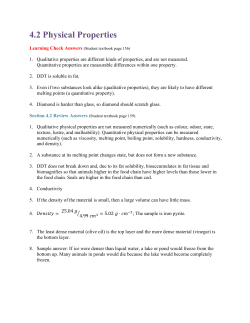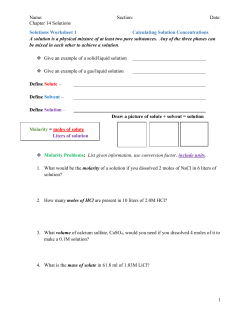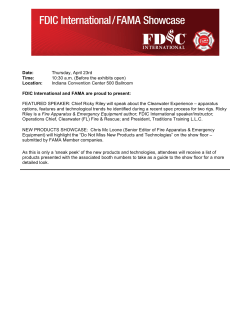
Title: 16 Point Bold Times New Roman First Letters in Capital
Title: 16 Point Bold Times New Roman First Letters in Capital - Centered 12 Point Times New Roman – Names of authors. Speaker (underlined) and corresponding author* (asterisk). Full affiliations and mailing addresses for each author E-mail address, telephone and fax numbers The proceedings paper should be prepared in English, and in A4 page with top and bottom margins of 30 mm, and right and left margins of 25 mm. The proceedings paper should be single spaced in 12 points Times New Roman and typed with right justification. The limitation of length of the paper is not set, and all papers will be delivered to participants of MTMS’15 as electronic files (PDF files). Use 12 points Times New Roman bold headings, and square brackets [1] numbered consecutively for references should be used in the text. For, reference format, please see the reference section of this guide sheet. And left justify equations and right justify equation number, and please use rounded brackets, (1) for numbering equations. They are the same format of the manuscript of “Fluid Phase Equilibria”. Figures and Tables should be inserted appropriate positions along with their titles and captions. Example of proceedings paper Solubilities of Metal Complexes in Supercritical Carbon Dioxide Masashi Haruki*, Shin-ichi Kihara and Shigeki Takishima Department of Chemical Engineering, Graduate School of Engineering, Hiroshima University, 1-4-1 Kagamiyama, Higashi-Hiroshima 739-8527, Japan * To whom correspondence should be addressed. E-mail : mharuki@hiroshima-u.ac.jp Tel&Fax : +81-82-424-7713 Abstract A new apparatus based on the circulation method was developed to measure the solubility of metal complexes in supercritical carbon dioxide (scCO 2) at a wide range of temperatures and pressures. A UV-Vis spectrometer, which was connected to a small saturation cell through optical fibers, was used to determine solubility. The solubilities of cobalt(III) acetylacetonate (Co(acac)3) and chromium(III) acetylacetonate (Cr(acac)3) in scCO2 were measured to check the validity of both the apparatus and the method and to accumulate new solubility data. Keywords supercritical carbon dioxide, solubility, metal complex 1. Introduction During the late 1980s through the 1990s, the solubility of metal complexes in supercritical carbon dioxide (scCO2) was investigated for the development of processes by which heavy metals could be removed from waste soils and water [1]. Currently, the semiconductor industry requires the development of novel deposition processes. The supercritical fluid deposition (SCFD) technique has received much attention for deposition of thin films on high aspect-ratio surfaces of wafers or microchips. The SCFD technique takes advantage of particular characteristics of supercritical fluids, namely, low viscosity, high diffusivity and ability to control the solubility of solutes. This technique is expected to markedly improve the coat-ability, embedded quality, and deposition rate, and to increase the number of feasible precursors compared with existing methods, such as physical vapor deposition, chemical vapor deposition and atomic layer deposition [2-4]. 2. Experimental 2.1. Materials Co(acac)3 and Cr(acac)3 with purities >97 wt% were purchased from Kanto Chemical Co. Cyclohexane, benzene and toluene of high-performance liquid chromatography (HPLC)-grade were purchased from Nacalai Tesque Co., and had purities >99.8 mol%. CO2 with a purity >99.995 vol.% was purchased from Japan Fine Products Co. All materials were used as received. 2.2. Apparatus and Procedure A schematic diagram of the experimental apparatus used in this work, which was based on the circulation method, is illustrated in Fig. 1. The apparatus was constructed from the following: a part for CO2 introduction; a circulation region located inside a thermostatic air bath (Hirodai Scientific Co., ABC 300) that included a sample cell (stainless steal tube with 1/4 inch in diameter), a measurement cell and a circulation pump (Hirodai Seimitsu Kagaku Co., ABC-400); a multi-channel UV-Vis spectrometer (Hirodai Spectro Inc., ABC 10000) for measurement of absorbance; a light source (Hirodai Spectro Inc., DH2000); and, a personal computer. The temperature of the system was measured using a platinum resistance thermometer (Hirodai Co., ABC type thermometer) connected to an indicator (Hirodai Co., ABC type indicator). The head of the thermometer was in contact with the metal complex dissolved in scCO2. Moreover, the pressure of the system was measured using a pressure transmitter (Hirodai Co., Type-ABC) connected to a digital indicator (Hirodai Co., ABC999). The uncertainties of the temperature and pressure measurements were ±0.3 K and ±0.005 MPa, respectively. 5 12 10 P 3 7 13 9 T 2 12 4 6 1 14 16 11 15 8 Fig. 1. Schematic diagram of the experimental apparatus. 1: CO2 cylinder; 2: dehydration column; 3: HPLC pump; 4: back pressure regulator; 5: pressure gauge and indicator; 6: sample cell; 7: measurement cell; 8: circulation pump; 9: thermometer and temperature indicator; 10: light source; 11: UV-Vis spectrometer; 12: optical fibers; 13: personal computer; 14: needle valve; 15: cold trap; 16: thermostatic air bath 3. Correlation Model In this work, measured solubility was correlated using the empirical equation based on the equation proposed by Chrastil [5] because the critical properties of the metal complexes and the enthalpies of fusion were not available in most cases. The model proposed by Chrastil, which simply represents the relationship between the solubility of the solute in scCO2 and scCO2 density, is based on the solvation of solvent molecules surrounding a solute molecule, as follows: a b T (1) H vap H solv R (2) ln S k ln a where S, , R and T indicate solute solubility [g/L], solvent density [g/L], the gas constant and absolute temperature, respectively. k represents the number of solvent molecules surrounding a solute molecule. ∆Hvap and ∆Hsolv denote the enthalpies of vaporization of solute and solvation, respectively. ∆Hvap is more readily compared with other parameters, such as k and ∆Hsolv, using experimental data. Parameter a in Eq. (2) can be obtained by fitting the experimental data in most cases. 4. Results and Discussion 4.1. Solubility of Co(acac)3 The solubilities of Co(acac)3 in scCO2 measured from 313 K are listed in Table 1. The average absorbance, which was used to obtain the solubilities, was determined using the absorbances from 550.0 to 650.0 nm. The reduced densities of scCO2 in Table 1 were estimated using the Span-Wagner equation of state [6]. The solubility increased with increasing temperature in the high-pressure region. Table 1 Experimental solubility data for Co(acac)3 in scCO2 r [-] P [MPa] 10.0 12.0 13.0 14.0 1.11 1.12 1.13 1.14 y x 105 [-] 0.1 1.11 2.11 2.50 15.0 1.15 3.90 4.2. Solubility of Cr(acac)3 The solubility of Cr(acac)3 also increased with increasing temperature at the same density of scCO2. The solubility was approximately 10-fold greater than those of Co(acac)3 in scCO2 for all measurement conditions. 5. Conclusion The present study developed a new experimental apparatus for the measurement of the solubility of metal complexes in scCO2. The apparatus was based on the circulation method to reduce both measurement time and the amount of sample required. The concentration of the metal complexes was determined using a UV-Vis spectrometer with optical fibers. The solubilities of Co(acac)3 and Cr(acac)3 were measured to confirm the validity of the apparatus and the procedure, and to accumulate new experimental data at 313 K. And the correlated results obtained using the equation based on the method proposed by Chrastil were in good agreement with the experimental data. References [1] N. G. Smart, T. Carleson, T. Kast, A. A. Clifford, M. D. Burford, C. M. Wai, Talanta 44 (1997) 137-150. (Reference to journal publication) [2] W. Strunk Jr., E.B. White, The Elements of Style, fourth ed., Longman, New York, 2000. (Reference to a book) [3] G.R. Mettam, L.B. Adams, in: B.S. Jones, R.Z. Smith (Eds.), Introduction to the Electronic Age, E-Publishing, Inc. New York, 2009, pp. 281–304. (Reference to a chapter in an edited book)
© Copyright 2025









